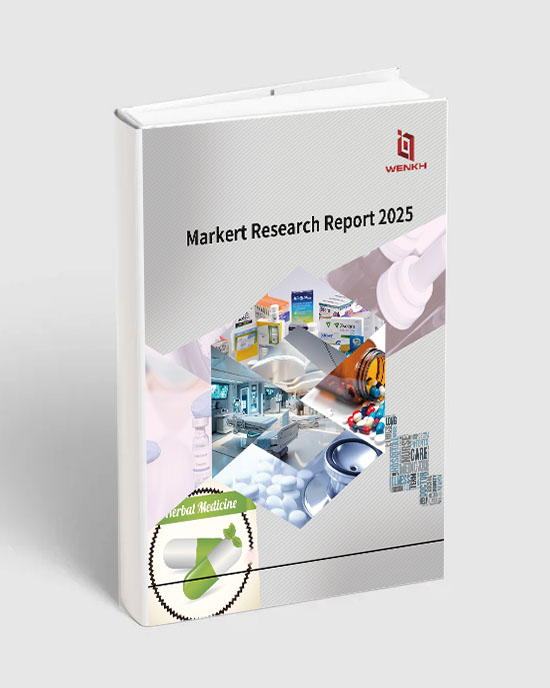
Global Pharmaceutical & Biotechnology Environmental Monitoring Market Size, Competition Landscape and Supply Chain Research Report 2025



Research Summary
Pharmaceutical and biotechnology environmental monitoring involves systematic surveillance and control of the environmental conditions within facilities engaged in pharmaceutical and biotechnological manufacturing processes. This monitoring ensures compliance with stringent quality standards and regulatory requirements. It includes the continuous assessment of critical environmental parameters such as air and water quality, temperature, humidity, and cleanliness to maintain optimal conditions for drug production and research activities. Monitoring systems utilize advanced technologies to detect and respond to potential contaminants, microbial growth, or deviations from specified conditions that could compromise the safety, efficacy, or sterility of pharmaceutical products or biotechnological processes. The implementation of robust environmental monitoring practices is vital for ensuring the integrity of pharmaceutical and biotechnological operations, preventing contamination, and upholding the quality and safety of the final products.
According to WENKH research statistics, the global Pharmaceutical & Biotechnology Environmental Monitoring market size will reach 1,232.96 Million USD in 2025 and is projected to reach 1,918.52 Million USD by 2032, with a CAGR of 6.52% (2025-2032). Among them, the Asia-Pacific Pharmaceutical & Biotechnology Environmental Monitoring market is undergoing rapid changes, reaching Million USD in 2025, accounting for approximately % of the global market share. It is projected to reach Million USD by 2032.
The global Pharmaceutical & Biotechnology Environmental Monitoring market is highly competitive, with key market players including Danaher Corporation, Thermo Fisher Scientific, Merck, Eurofins Sinensis, Lonza, Biomerieux, VAI, Cosasco, RMONI, Amphenol Advanced Sensors, Vaisala, etc. This report categorizes the competitive landscape of the global Pharmaceutical & Biotechnology Environmental Monitoring market into three tiers based on annual revenue, with the top three market players holding approximately % of the total market share.
This report provides an in-depth analysis of the global Pharmaceutical & Biotechnology Environmental Monitoring market, including market size, price trends, market status and future development prospects. It particularly focuses on the market share, product characteristics, pricing, sales revenue, and gross profit margin of major players in the global Pharmaceutical & Biotechnology Environmental Monitoring industry. Additionally, this report provides an in-depth analysis of the market status and future development trends of different product segments of Pharmaceutical & Biotechnology Environmental Monitoring and their downstream application fields.
In terms of data, this report includes a comprehensive time-series dataset. The historical data spans from 2020 to 2024, providing a solid foundation for analyzing past market trends. The year 2025 is used as a base year to accurately assess the current market landscape. Forecast data covers the period from 2026 to 2032, utilizing scientific analysis methods and models to offer forward-looking predictions and insights into the market's future development. This provides valuable reference information for industry participants and stakeholders.
The report covers regions and countries including North America, Europe, China, Asia Pacific (excluding China), Latin America, the Middle East, and Africa. It particularly focuses on the sales revenue of Pharmaceutical & Biotechnology Environmental Monitoring in these regions and countries, as well as the market share of key market players in each region. The report provides an in-depth analysis of the regional distribution and future development trends of the Pharmaceutical & Biotechnology Environmental Monitoring market. By considering local policies, this report evaluates the market prospects of Pharmaceutical & Biotechnology Environmental Monitoring in each region and country, aiming to help companies gain a comprehensive understanding of the industry characteristics and development potential in different regions, optimize regional business layout, and develop precise market strategies to achieve global development goals.
This report places a strong emphasis on data quality and reliability, utilizing diverse and extensive data sources to ensure the accuracy and validity of the information presented. Primary data collection involves multiple channels, including in-depth interviews with senior executives, industry experts, supply chain stakeholders, and end consumers. These interviews provide key insights into corporate strategic planning, industry policy interpretation, supply chain dynamics, and end-user experiences. Secondary data sources cover a wide range of authoritative statistics from government agencies, customs databases, industry associations, third-party paid databases, brokerage research reports, academic research findings, corporate annual reports, financial statements, real-time news updates, and relevant information from international organizations. These data sources serve as a solid foundation for verification and analysis.
Companies Covered
Danaher Corporation
Thermo Fisher Scientific
Merck
Eurofins Sinensis
Lonza
Biomerieux
VAI
Cosasco
RMONI
Amphenol Advanced Sensors
Vaisala
Product Segment
Monitoring Equipment
Media
Software
Microbiology Services
Product Application
Pharmaceutical Industry
Biotechnology Industry
Academic & Research Institutes
Chapter Scope
Chapter 1: Product Statistical Scope, Product Segmentation Types and Downstream Applications, Overall Market Size, Current Status and Development Prospects
Chapter 2: Global Pharmaceutical & Biotechnology Environmental Monitoring Industry Chain Analysis
Chapter 3: Global Pharmaceutical & Biotechnology Environmental Monitoring Industry Environment Analysis and Porter's Five Forces Analysis
Chapter 4: Analysis of the Competitive Landscape of Major Companies in the Global Pharmaceutical & Biotechnology Environmental Monitoring Market (Market Share, Product Revenue Comparison, Tier Division, Corporate Expansion and M&A Trends)
Chapter 5: Analysis of Global Major Companies (Company Profiles, Product Features and Product Segment, Product Revenue, Product Average Price, Gross Profit Margin and Geographical Sales Share)
Chapter 6: Global Pharmaceutical & Biotechnology Environmental Monitoring Product Segment and Downstream Application Size Analysis and Major Regional Market Size Analysis
Chapter 7: North America Pharmaceutical & Biotechnology Environmental Monitoring Product Segment, Downstream Application, and Major Countries Market Size Analysis
Chapter 8: Europe Pharmaceutical & Biotechnology Environmental Monitoring Product Segment, Downstream Application, and Major Countries Market Size Analysis
Chapter 9: China Pharmaceutical & Biotechnology Environmental Monitoring Product Segment, Downstream Application, and Major Countries Market Size Analysis
Chapter 10: Asia Pacific (excluding China) Pharmaceutical & Biotechnology Environmental Monitoring Product Segment, Downstream Application, and Major Countries Market Size Analysis
Chapter 11: Latin America Pharmaceutical & Biotechnology Environmental Monitoring Product Segment, Downstream Application, and Major Countries Market Size Analysis
Chapter 12: Middle East and Africa Pharmaceutical & Biotechnology Environmental Monitoring Product Segment, Downstream Application, and Major Countries Market Size Analysis
Chapter 13: Research Conclusion
Chapter 14: Methodology and Data Source
Purpose and Value of the Report
Market Trend Insights: Analyze industry trends, market dynamics, and future growth potential to help companies forecast changes and develop strategic plans.
Competitive Landscape Analysis: Understand key players' revenue segmentation, strategies, market share, and business models to guide competitive decisions.
Investment Decision Support: Provide feasibility analysis through market size, growth rate, demand trends, and potential risks for informed investment decisions.
Target Customer and Demand Analysis: Examine consumer behavior, purchasing preferences, and pain points to optimize products and improve market penetration.
Policy and Regulatory Insights: Interpret relevant industry policies to ensure compliance and mitigate regulatory risks.
Business Model Optimization: Offer data-driven suggestions for enhancing business models and improving profitability.





